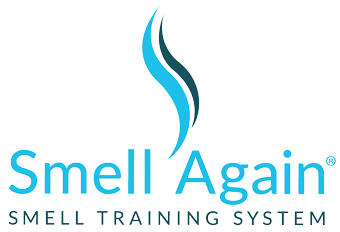by David W. Kennedy, MD
Editor-in-Chief International Forum of Allergy & Rhinology, Vol. 7, No. 6, June 2017
International Forum of Allergy & Rhinology, Vol. 7, No. 6, June 2017
Olfactory loss is a significant and sometimes debilitating symptom in chronic rhinosinusitis (CRS) and, in my experience, has proven to be the most sensitive rhinologic symptom in terms of early patient identification of disease recurrence postsurgery. Our patients are routinely made aware of the need to contact us and also intensify their own medical therapy if they develop a decrease in their sense of smell following CRS surgery. One of the primary issues that led to olfaction being the “forgotten sense” is a profound lack of therapeutic options when olfactory loss is not associated with inflammatory disease. However, increasing evidence that olfactory training may be beneficial in patients who suffer a decreased sense of smell from a broad swath of causes has renewed interest within the field.1 An interesting article from Croy et al.2 also suggested that close to 100% of the population have anosmias to specific odors, and also demonstrated that olfactory training appeared to be beneficial for these very specific defects.
In the 1990s, Yousem et al.3 demonstrated volume loss in the olfactory bulb (OB) on magnetic resonance imaging (MRI) in patients with a decreased sense of smell. Subsequent research continued to evaluate the OB volume, and the olfactory pathways in olfactory loss, and the findings were consistent to the point that the OB volume became considered “an established tool in the investigation of olfactory function” and even a “morphologic indicator of olfactory function.”4 However, in this issue of the International Forum of Allergy and Rhinology (IFAR), a new study by the Dresden group involving patients with olfactory loss arising from CRS did not demonstrate any decrease in OB volume compared to controls, thus reversing the concept that OB volume is indeed an indicator of olfactory function in CRS.5 The authors hypothesize that this may be due to the fluctuating nature of olfactory loss in this disease, as opposed to other causes of olfactory loss. However, they did identify gray matter reduction in the gyrus rectus, orbitofrontal cortex, thalamus, and the insula in the CRS patients, in addition to reporting a high correlation between the Lund-Kennedy score and olfactory performance. Although recognized as an early sign of neurodegenerative disorders, olfactory loss has also been reported in obstructive sleep apnea (OSA). A study in this month’s IFAR evaluates the effect of positive airway pressure in patients with OSA related olfactory loss. The authors report olfactory improvement as a result of positive airway pressure therapy.6 Given the importance of a good sense of smell to quality of life, for enjoyment of food and avoidance of danger, continued olfactory research is critical to our field.
The physical stress associated with performing sinus surgery has not been widely studied, and 2 papers in this issue address different aspects of this topic. Ramakrishnan and Milam7 tackle this question in a small cadaver study involving a single dissection by using validated questionnaires and surface electromyography. They evaluated physical fatigue in both the standing and sitting positions and reported that discomfort following endoscopic sinus surgery in the standing position was worse in the legs and lower back whereas in the sitting position it was seen predominantly in the upper back and arms. This study therefore suggests that the use of armrests may be helpful in the sitting position; a surgical position which I learned early as a neuro-otologist and lateral skull-base surgeon, and continued into endoscopic procedures. As the authors point out, the fact that the surgeons in this study found sitting “more frustrating” may be associated with lack of familiarity. Jukes et al.8 evaluate surgeon stress when managing massive bleeding with the Adelaide endoscopic vascular injury model. They demonstrate increased pulse rate and blood pressure in both attending surgeons and trainees with higher elevations in the arterial than the venous model when the bleeding occurred. Simulation training initially gained traction in the airline industry but has now become widespread in medicine, and the resulting increased confidence in dealing with untoward events is well demonstrated. I can personally attest that even experienced surgeons benefit from dealing with simulated vascular catastrophe with either this model or the University of Southern California (USC) perfused cadaver head vascular model. It will be interesting to see how long it takes before refresher simulation becomes routine for surgeons as it has long been for commercial pilots.
Reduced bacterial diversity in CRS has been previously demonstrated in several studies. Lal et al.9 report on an outpatient study of microbiome analysis from the middle meatus (MM) and inferior meatus (IM) of patients with allergic rhinitis, CRS with nasal polyposis (CRSwNP), and CRS without nasal polyposis (CRSsNP), as well as healthy controls. Their study demonstrated significantly reduced bacterial diversity and anaerobic enrichment in CRSsNP, but did not demonstrate a change in bacterial diversity in CRSwNP. However, in the latter there was elevated Staphylococcus aureus middle meatal colonization, potentially reinforcing the S. aureus enterotoxin hypothesis.
Two large database study articles regarding CRS and its management are included in this edition. Asthma has long been associated with increased mortality risk. Given the known systemic risks of inflammation, Alt et al.10 evaluated the respective mortality risks of CRS with and without asthma using a statewide population database of more than 27,000 patients diagnosed with CRS. In addition to documenting the increased mortality risk with asthma, the study suggested that the combination of asthma and CRS had a protective effect on asthma mortality. The authors propose that this effect may be due to improved asthma management as a result of recognition and treatment of CRS. However, what is not explained is why patients with CRS have a lower mortality than controls. It is possible that the latter may be due to improved health care access for this socioeconomic demographic. A study by Filimonov et al.11 utilized the American College of Surgeons National Surgical Quality Improvement (ACS-NSQIP) database to evaluate the effect of diabetes mellitus (DM) and endoscopic sinus surgery outcomes. Unsurprisingly, the study did demonstrate an increased overall complication rate in DM patients, but it did not show an effect on surgical mortality, readmission, or reoperation rates.
The article on the physical stress involved in endoscopic sinus surgery by Ramarkishnan and Milam7 is the topic of a “Scope it Out” podcast with Dr. Tim Smith, available for download on the IFAR website: http://onlinelibrary.wiley.com/journal/10.1002/(ISSN)2042- 6984. For those readers with an interest in this field, I strongly recommend listening to the very interesting discussion between Drs. Smith and Ramakrishnan on this topic. As with the “Case of the Month,” these podcasts are available without charge even to individuals who do not subscribe to the Journal.
References
1. Pekala K, Chandra RK, Turner JH. Efficacy of olfactory training in patients with olfactory loss: a systemic review and meta-analysis. Int Forum Allergy Rhinol, 2016;6:299–307.
2. Croy I, Olgun S, Mueller L, et al. Peripheral adaptive filtering in human olfaction? Three studies on the prevalence and effects of olfactory training in specific anosmia in more than 1600 participants. Cortex. 2015;73:180–187.
3. Yousem DM, Geckle RJ, Bilker WB, McKeown DA, Doty RL. Posttraumatic olfactory dysfunction: MR and clinical evaluation. AJNR Am J Neuroradiol. 1996;17:1171–1179.
4. Hummel T, Urbig A, Huart C, Duprez T, Rombaux P. Volume of olfactory bulb in depth of olfactory sulcus and 378 consecutive patients with olfactory loss. J Neurol. 2015;262:1046–1051.
5. Han P, Whitcroft KL, Fischer J, et al. Olfactory brain gray matter volume reduction in patients with chronic rhinosinusitis. Int Forum Allergy Rhinol. 2017;7:551–556.
6. Koseo˘glu S, Derin S, Yilmaz M, Kutlu G, Sahan M. Does positive airway pressure therapy improve olfactory function? Int Forum Allergy Rhinol. 2017;7: 557–560.
7. Ramakrishnan VR, Milam BM. Ergonomic analysis of the surgical position in functional endoscopic sinus surgery. Int Forum Allergy Rhinol. 2017;7:570–575.
8. Jukes AK, Mascarenhas A, Murphy J, et al. Stress response and communication in surgeons undergoing training in endoscopic management of major vessel hemorrhage: a mixed methods study. Int Forum Allergy Rhinol. 2017;7:576–583.
9. Lal D, Keim P,Delisle J, et al.Mapping and comparing bacterial microbiota in the sinonasal cavity of healthy, allergic rhinitis, and chronic rhinosinusitis subjects. Int Forum Allergy Rhinol. 2017;7:561–569.
10. Alt JA, Thomas AJ, Curtin K, Wong J, Rudmik L, Orlandi RR. Mortality risk in patients with chronic rhinosinusitis and its association to asthma. Int Forum Allergy Rhinol. 2017;7:591–599.
11. Filimonov A, Chung SY, Wong A, Brady JS, Baredes S, Eloy JA. Effect of diabetes mellitus on postoperative endoscopic sinus surgery outcomes. Int Forum Allergy Rhinol. 2017;7:584–590.
